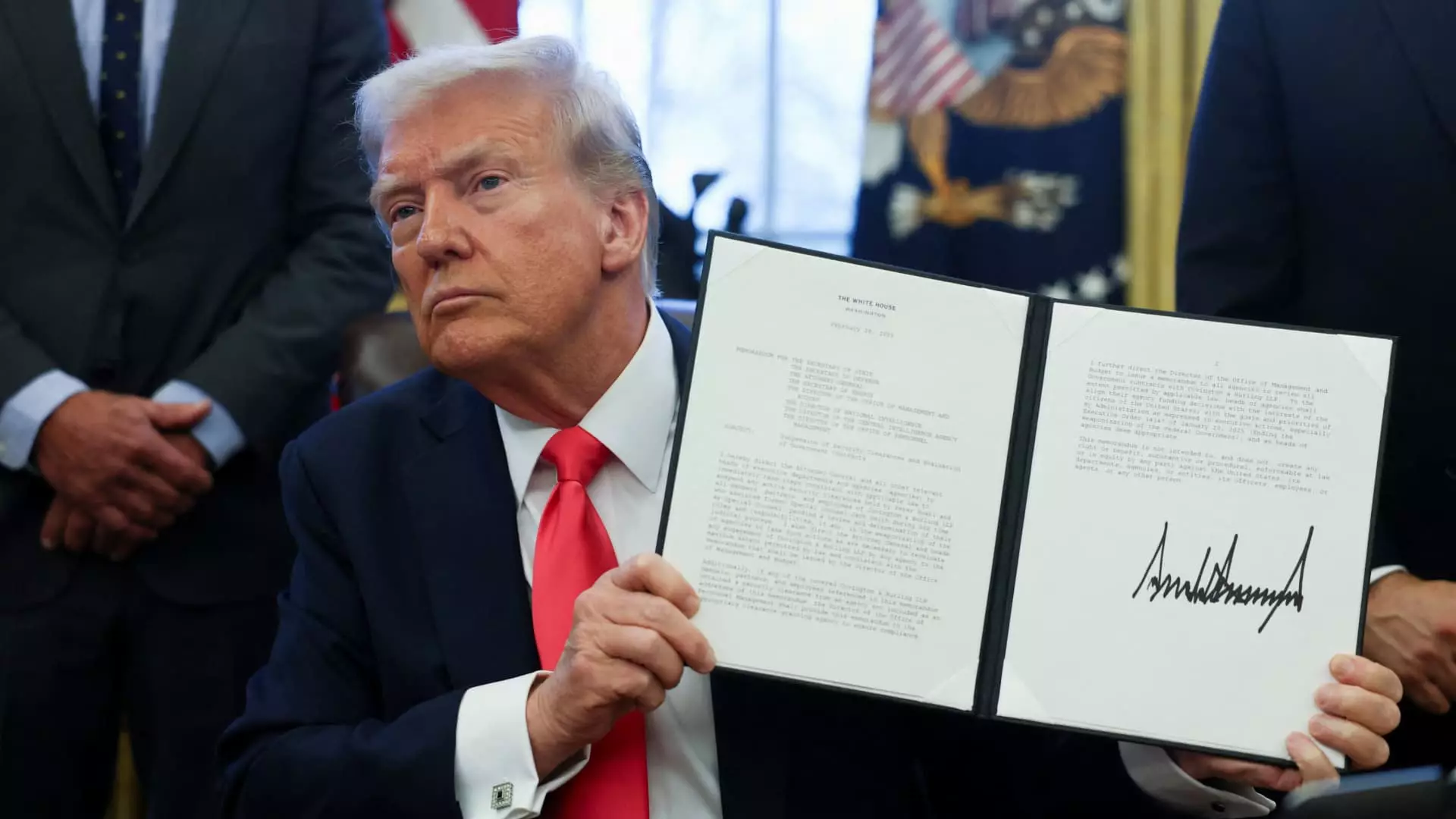On a recent Thursday, President Donald Trump made headlines by announcing the planned implementation of significant tariffs on goods imported from Mexico and Canada, as well as an increase in tariffs on Chinese products. The tariffs are set to take effect on March 4 and are aimed at addressing what Trump describes as an ongoing crisis involving the influx of illegal drugs into the United States. The announcement reaffirms the administration’s aggressive trade stance and seeks to emphasize the need for “America First” policies. However, the clarity of the president’s intentions is often clouded by conflicting statements from his administration, raising questions about the stability of U.S. trade policy.
The communication surrounding the tariffs has been anything but straightforward. Just hours before Trump’s post on Truth Social, National Economic Council Director Kevin Hassett appeared on CNBC, indicating that the administration was still evaluating tariff policies for all countries, pending the results of a study scheduled for April 1. Hassett’s statements suggested that there would be a holistic approach to tariffs instead of a piecemeal application focused solely on Mexico, Canada, and China. Yet, Trump’s abrupt declaration essentially contradicted this narrative, creating an aura of unpredictability around U.S. trade relations.
This muddled messaging is not novel for the Trump administration, which has a history of mixed signals that often lead to market volatility. Following Trump’s announcement, futures for the Dow Jones Industrial Average dipped slightly but rebounded once the markets opened, highlighting how investor confidence frequently hinges on the clarity of governmental policy.
Trump’s rationale for the tariffs primarily revolves around issues related to illegal drug trade and border security. He cited the “high and unacceptable levels” of drugs entering the country as a justification for the new policy. Despite pledges from both Mexico and Canada to enhance border control measures, Trump insists the measures have been ineffective thus far. His position reflects a broader strategy that equates economic sanctions with national security, arguing that trade actions are not merely fiscal tools but also instruments for fostering safety.
Moreover, Trump’s determination to impose tariffs serves multiple purposes. On one hand, it presents an image of a strong leader willing to take bold action to protect American interests. On the other hand, it serves as a revenue source, giving a veneer of financial pragmatism to what could be a politically motivated agenda. The timing of these tariffs also appears calculated, coinciding with the approaching 2024 presidential election cycle, where strong stances on immigration and trade issues resonate with a significant segment of the electorate.
The Bigger Picture: Reciprocal Trade Policies
Alongside the tariffs directed at Mexico, Canada, and China, the Trump administration has also laid out plans for broader reciprocal tariffs on steel and aluminum imports from various countries, set to take effect in the near future. This signals an overarching trend in Trump’s trade policy: a willingness to engage in aggressive trade practices that could spark retaliatory measures from other nations. The concept of reciprocal tariffs presents an intriguing, if contentious, framework for understanding international trade, suggesting a shift away from long-standing norms of free trade agreements toward a more confrontational approach that seeks to redress perceived imbalances.
Additionally, Trump’s focus on imposing tariffs in response to foreign nations’ trade practices, including value-added taxes, indicates an intention to confront a wide range of economic behaviors viewed as unfair. The emphasis remains on leveraging tariffs as a tool not just for negotiation but as a strategy intended to generate concrete economic outcomes.
The announcement of these tariffs reflects a continuation of Trump’s commitment to a protectionist trade policy that has characterized much of his presidency. However, the embedded inconsistencies in communication from the administration complicate the ability of businesses and consumers to make informed decisions in an increasingly unpredictable economic landscape. As the situation evolves, stakeholders from various sectors will need to closely monitor these developments to mitigate potential impacts—both immediate and long-term—on international trade relations and the broader U.S. economy. The forthcoming months will be pivotal in shaping not just presidential campaigning narratives but also the very fabric of the U.S. economy in the face of an ever-changing global trade environment.


Leave a Reply